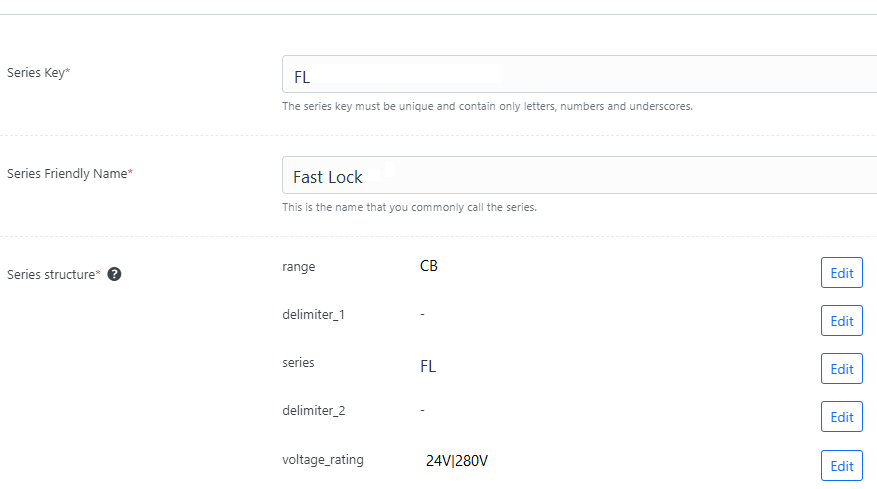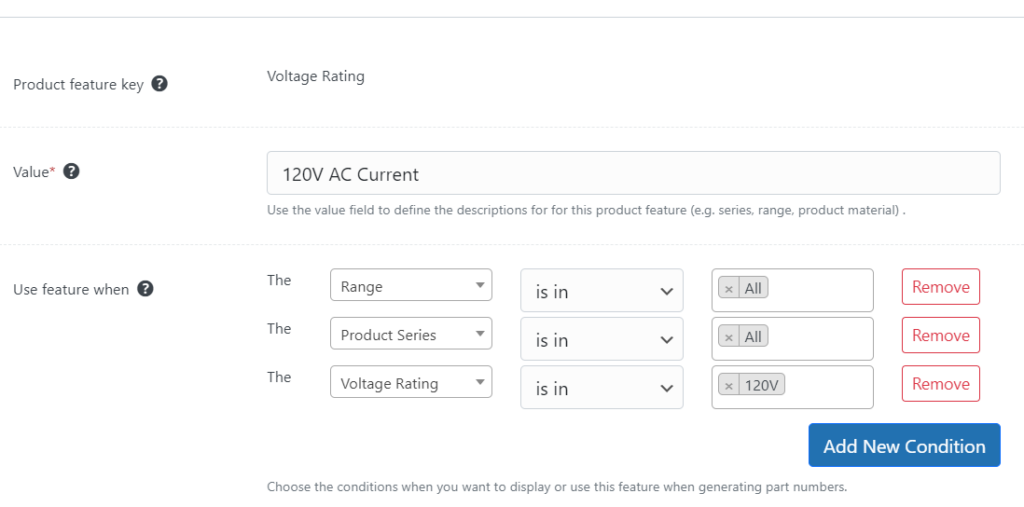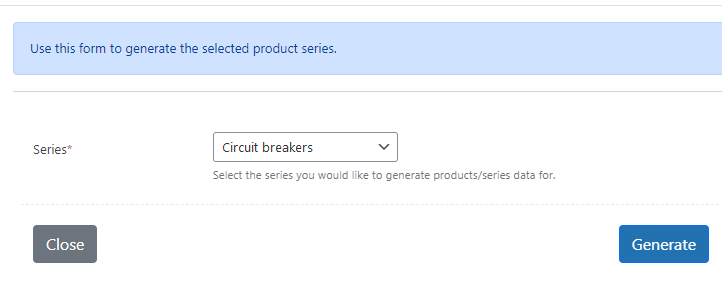
Intelligent Part Numbering Scheme For Circuit Breakers
This article outlines how to create an intelligent part numbering scheme for Circuit Breakers, and how you can accurately manage this at scale
A circuit breaker is an electrical switch that automatically interrupts the flow of current in a circuit in order to protect an electrical system from damage caused by overloading or short circuiting.
To create a part numbering scheme for Circuit Breakers there are several characteristics you might take into consideration. Here are 5 as an example:
- Fast Lock or Mini Box – FL, MB: These are product lines or series of circuit breakers made by different manufacturers. Fast Lock is designed for quick installation and removal, with features such as a snap-on design or a tool-less locking mechanism. Mini Box is designed for use in small enclosures or tight spaces, with features such as a compact size or side-mounting options.
- Voltage rating – 24V, 480V: This characteristic specifies the voltage rating of the circuit breaker. It indicates the maximum voltage that the circuit breaker is designed to handle. For example, a 24V circuit breaker is designed to be used in circuits with a voltage of 24 volts or less, while a 480V circuit breaker is designed to be used in circuits with a voltage of up to 480 volts.
- Amperage – 30A, 40A: This characteristic specifies the amperage or current rating of the circuit breaker. It indicates the maximum amount of current that the circuit breaker can safely handle without tripping. For example, a 30A circuit breaker is designed to handle up to 30 amps of current, while a 40A circuit breaker is designed to handle up to 40 amps of current.
- Pole configuration – 1-pole, 3-pole: This characteristic specifies the number of poles or connections in the circuit breaker. A pole refers to a set of contacts that open and close together to interrupt the current flow. A 1-pole circuit breaker has one set of contacts, while a 3-pole circuit breaker has three sets of contacts. The number of poles required for a circuit breaker depends on the number of phases and the configuration of the circuit.
- Trip curve – B,C,D: This characteristic specifies the trip curve of the circuit breaker, which indicates how quickly the circuit breaker will trip in response to an overcurrent condition. The trip curve is designed to match the characteristics of the circuit and the loads connected to it. A B curve circuit breaker trips quickly in response to short circuits and overloads, while a C curve circuit breaker has a medium tripping time, and a D curve circuit breaker has a longer tripping time and is designed for circuits with high inrush currents.
To create the actual part number, you could assign a unique code to each option for each characteristic. For example, you could use an abbreviation for the range (e.g. CB for Circuit Breakers) and then for the Fast Lock or Mini Box series (e.g. FL for Fast Lock and MB for Mini Box), and so on. Then, you can combine the codes for each characteristic to form the complete part number. For example, a circuit breaker with the following characteristics:
- Fast Lock
- Voltage rating: 24V
- Amperage: 40A
- Pole configuration: 1-pole
- Trip curve – D
This might result in a part number that looks like this: CB-FL-24V-40A-1P-D
You can then use this part number as a unique identifier for the circuit breaker in your inventory management system or product catalog.
How can this be done accurately at scale?
PDE is designed to make the definition, management and generation of these part number schemes easy to manage at scale.
Rules for how the product codes should work are entered into the system and then the system can generate the most complicated combinations accurately.
Setting up a the structure of a product series in PDE is straight forward.

Once you have the structure defined, you can add feature data like voltage rating and control how and where features appear using simple to define rules.

Once you have loaded your data head to the generator.

It will take seconds to generate hundreds of accurate web pages, data sheets and series overview.

The best way to see if Product Data Engine is a good fit for your requirements is to take a look at our 3 minute product tour. We would love to show it to you and see if it is a good fit.
